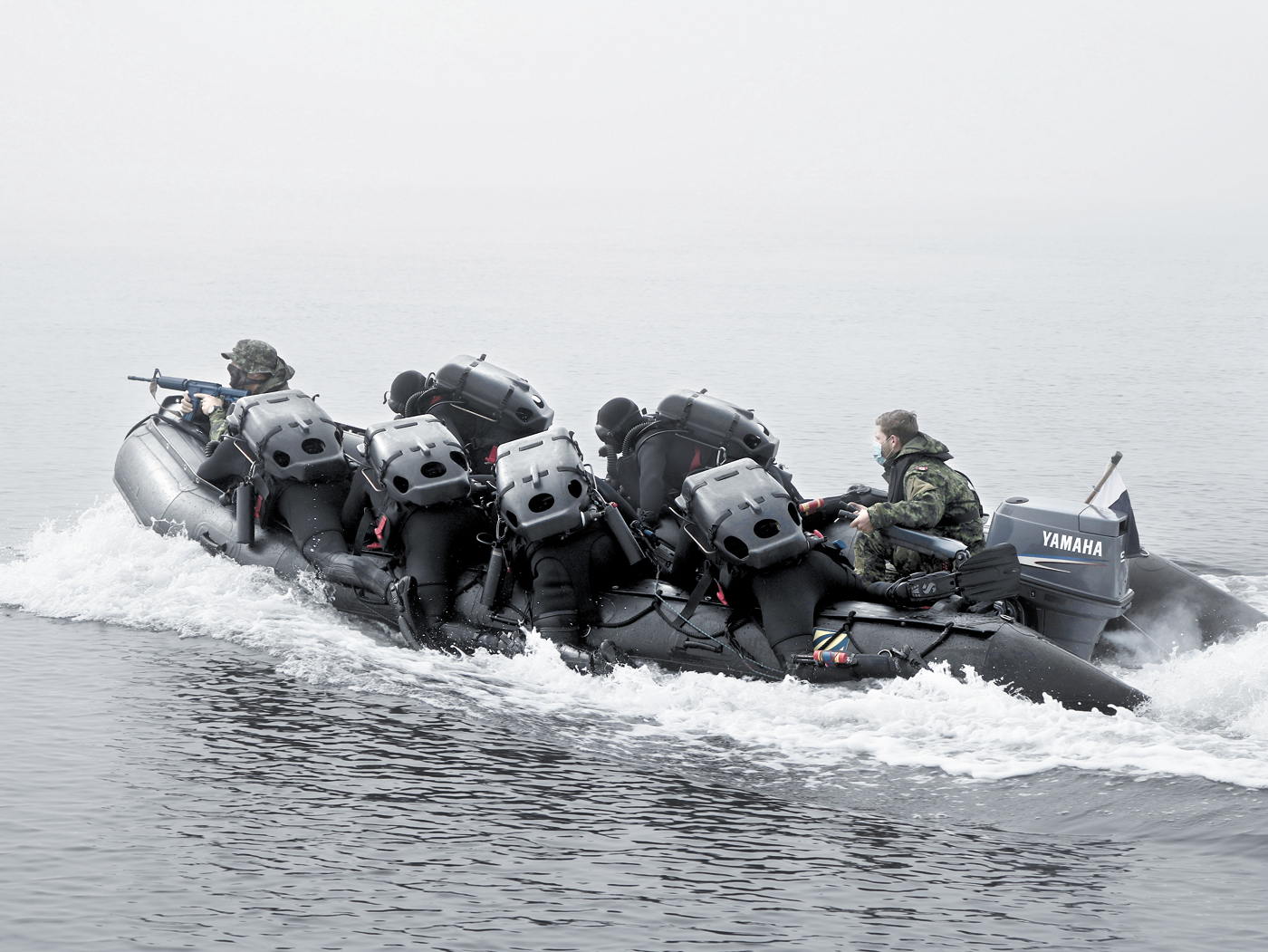The making of a clearance diver
By Lookout on Sep 29, 2020 with Comments 1

Clearance Divers in-training practice covert insertion into an enemy held beachfront to search for sea mines.
Fleet Diving Unit (Pacific)
–––
It has been a long journey for the 10 candidates on Clearance Diver Course 0014 – two officers and eight non-commissioned members who began their training on Sept. 3, 2019, and will graduate in November.
Training has been run primarily at Fleet Diving Unit (Pacific) in Colwood by the Unit’s training department, which is comprised of highly experienced clearance divers who oversee the initial training of all new clearance diver candidates.
“Over the course of a year we’ve learned a lot; surface-supplied helmet diving, how to treat dive casualties in a recompression chamber, and how to prepare and set explosive charges underwater. It’s a really broad set of skills,” says Lt(N) Jesse Deason, one of two officers on the course.
To date, candidates havefinish honed their ability to locate sea mines in a non-permissive environment. The group planned and executed an underwater search mission, locating two training mines planted on the bottom of the ocean. One of these mines was a Rockan, which is deceptively shaped like a large rock and difficult to detect. Divers found it using their Shark Marine Navigator, an underwater navigation system with a fitted GPS and multi-beam sonar suite.
They were the first group to undergo training with a focus on clandestine, very shallow water operations. This was a five-week phase in the course that began Aug. 18 and finished Sept. 17. The phase included learning how to dive with a rebreather and conduct covert missions within a limited timeframe. The group planned and executed underwater reconnaissance, survey, and clearance missions, both during the day and at night.
“After a mission briefing given by the force leader, we set off to assemble dive sets and setup equipment,” explained Lt(N) Deason. “We deployed from a small boat before diving and swimming to the target, where we split up to cover more ground underwater. When each team finished their task, we met underwater at a rendezvous point and swam in close formation to an extract location. At the extract point, the force leader confirmed the area was safe by taking a tactical peek. When all was clear, I signalled the rest of the team to surface, and we were picked up by boat for extraction.”
If a hostile beach or harbour needs to be cleared for friendly vessels or landing craft, the procedure would be along these lines.
By breathing pure oxygen in a closed-circuit system, divers can stay underwater for hours without giving off bubbles. This lack of bubbles is vital to evade detection and to avoid setting off an underwater mine.
Those on Clearance Diver Course 0014 dove for many hours, sometimes conducting multiple three-hour dives during a single day to prepare for the rigours of diving operationally.
During their final training mission of the phase, divers navigated through a kelp forest and a strong current to their objective. Fortunately there was good visibility, which is often not the case in this part of Canada.
Inevitably, there were challenges operating underwater, but course candidates, who adopted the motto ‘grit’ and the call sign ‘Happy Tuna’, have a mindset of overcoming obstacles and completing the mission.
“It is truly a rewarding experience watching these young divers plan and execute a dive mission from A to Z,” said PO1 Giles Pease, lead instructor. “These guys have spent many hours underwater honing their new field craft. On average, each of them has spent the equivalent of about three days underwater since the start of course.”
The course has several phases left to complete prior to graduation. Next up is the deep rebreather phase, diving solo down to 60 metres. Then there is underwater cutting, welding, and using hydraulic tools followed by light salvage. The team will be presented with a task of raising a sunken vessel using all the skills they have learned.
Upon graduation, half the course members will return to Halifax, while the other half will be posted to Victoria.
––––
Filed Under: Top Stories
About the Author:






This is a well written piece on a trade not well understood by those not involved, or, like me, long out of the naval sphere.
We all knew about these people, what they did, but not much how broad their training and hence responsibilities were. Well done.